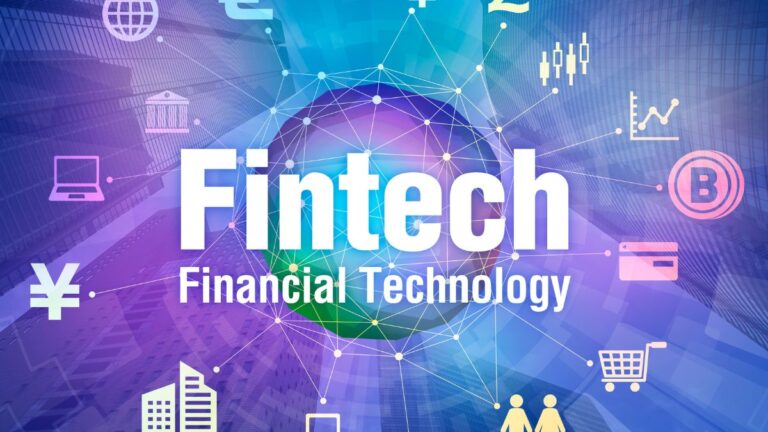Embedded Finance: Revolutionizing Digital Payment Ecosystems
In the rapidly evolving digital landscape, financial technology is transforming how businesses and consumers interact with financial services. Embedded finance represents a groundbreaking approach that seamlessly integrates financial solutions directly into non-financial platforms, creating unprecedented convenience and accessibility.
The Core Mechanics of Embedded Finance
Modern businesses are discovering innovative ways to incorporate financial services within their existing digital ecosystems. By leveraging advanced APIs and sophisticated integration technologies, companies can now offer banking, payment, lending, and insurance services without requiring customers to navigate traditional financial infrastructures.
Key Technical Components
- Advanced Application Programming Interfaces (APIs)
- Secure Cloud-based Financial Infrastructure
- Machine Learning Risk Assessment Algorithms
- Real-time Transaction Processing Systems
Transformative Impact Across Industries
Embedded finance is revolutionizing multiple sectors by providing seamless financial experiences. E-commerce platforms can now offer instant credit, ride-sharing apps can integrate instant payments, and software applications can include sophisticated financial management tools without complex integrations.
Industry-Specific Implementation Strategies
- Retail: Instant point-of-sale financing
- Technology: Integrated payment solutions
- Transportation: Automatic fare and subscription management
- Healthcare: Streamlined billing and insurance processing
Technical Architecture and Infrastructure
The underlying architecture of embedded finance relies on sophisticated middleware technologies that enable smooth communication between financial service providers and non-financial platforms. These middleware solutions create secure, compliant channels for financial transactions while maintaining robust security protocols.
Security Considerations
Embedded finance platforms prioritize advanced security measures, including:
- Multi-factor authentication
- End-to-end encryption
- Real-time fraud detection mechanisms
- Comprehensive regulatory compliance frameworks
Economic and Consumer Benefits
Consumers gain significant advantages through embedded finance solutions. These include:
- Reduced friction in financial transactions
- Personalized financial experiences
- Lower transaction costs
- Enhanced accessibility to financial services
- Faster decision-making processes
Market Growth Projections
| Year | Estimated Market Value | Growth Percentage |
|---|---|---|
| 2022 | $54.3 Billion | 22.4% |
| 2025 | $138.6 Billion | 38.7% |

Future Technological Developments
Emerging technologies like blockchain, artificial intelligence, and advanced machine learning algorithms are expected to further enhance embedded finance capabilities. These technologies will enable more sophisticated risk assessment, personalized financial products, and seamless cross-platform integrations.
Potential Innovation Areas
- Decentralized financial platforms
- AI-driven financial recommendations
- Blockchain-based transaction verification
- Predictive financial modeling
As digital ecosystems continue evolving, embedded finance represents a critical intersection between technology and financial services. By breaking down traditional barriers and creating more intuitive, accessible financial experiences, this innovative approach is set to redefine how individuals and businesses manage financial interactions in the digital age.
The convergence of cutting-edge technology and financial services promises a future where financial tools are more integrated, intelligent, and user-centric than ever before.
Core Technological Infrastructures Enabling Seamless Financial Integration
In the rapidly evolving digital finance landscape, technological infrastructures are revolutionizing how financial services integrate and operate across various platforms. Modern financial ecosystems now rely on sophisticated technological frameworks that enable seamless, secure, and efficient financial interactions.
Advanced Integration Architectures
Contemporary technological infrastructures leverage complex integration architectures that allow different financial systems to communicate effortlessly. Application Programming Interfaces (APIs) play a crucial role in creating interconnected financial networks, enabling real-time data exchange and transaction processing across multiple platforms.
Key Technological Components
- Microservices architecture
- Cloud-based financial platforms
- Distributed ledger technologies
- Secure authentication protocols
- Machine learning algorithms
Data Security and Interoperability
Modern financial integration demands robust security mechanisms that protect sensitive information while maintaining seamless operational capabilities. Advanced encryption technologies and multi-factor authentication systems ensure that financial transactions remain protected across different technological platforms.
Security Framework Elements
- End-to-end encryption
- Real-time threat detection
- Blockchain-based verification
- Adaptive risk management systems
Cloud-Native Financial Infrastructures
Cloud technologies have transformed financial integration by providing scalable, flexible, and cost-effective solutions. These infrastructures enable financial institutions to deploy complex systems rapidly, reduce operational costs, and enhance overall technological responsiveness.
Cloud Integration Benefits
| Benefit | Impact |
|---|---|
| Scalability | Instant resource allocation |
| Cost Efficiency | Reduced infrastructure expenses |
| Global Accessibility | Seamless cross-border operations |
AI and Machine Learning Integration
Artificial intelligence and machine learning algorithms are increasingly becoming fundamental components of financial technological infrastructures. These intelligent systems enable predictive analytics, automated decision-making, and enhanced risk management strategies.
Advanced AI Applications
- Automated credit scoring
- Fraud detection mechanisms
- Personalized financial recommendations
- Predictive market analysis
Emerging Technological Trends
The future of financial integration is being shaped by cutting-edge technologies like quantum computing, advanced blockchain networks, and sophisticated decentralized finance (DeFi) platforms. These innovations promise to further revolutionize how financial services are delivered and consumed.
Future Technology Trajectory
- Enhanced interoperability
- Increased automation
- More personalized financial experiences
- Reduced transaction complexity
Financial institutions and technology providers continue to invest heavily in developing robust, secure, and adaptive technological infrastructures. By prioritizing innovation, security, and user experience, these systems are transforming the global financial landscape, making transactions more efficient, transparent, and accessible than ever before.
Impact of Embedded Finance on Consumer Banking Experiences
In the rapidly evolving digital financial landscape, consumer banking experiences are undergoing a transformative revolution driven by embedded finance. This innovative approach seamlessly integrates financial services into non-financial platforms, creating unprecedented convenience and accessibility for users across various sectors.
Redefining Financial Interactions
Embedded finance is fundamentally changing how consumers interact with financial services. By eliminating traditional barriers, it allows individuals to access banking features directly within their preferred digital environments. Imagine purchasing insurance while booking a flight, obtaining instant credit during an online shopping experience, or managing investments through your favorite mobile application.
Technology-Powered Financial Integration
Advanced technological infrastructure enables this seamless integration. Application Programming Interfaces (APIs), cloud computing, and sophisticated machine learning algorithms work collectively to create frictionless financial experiences. These technologies allow non-financial platforms to incorporate sophisticated financial capabilities without developing complex banking infrastructure from scratch.
Key Technological Enablers
- Robust API Connectivity
- Scalable Cloud Platforms
- Advanced Data Analytics
- Machine Learning Algorithms
- Secure Authentication Mechanisms
Consumer Experience Transformation
Traditional banking models required customers to navigate complex processes, visit physical branches, or interact with separate financial platforms. Embedded finance disrupts this paradigm by offering instantaneous, contextual financial services precisely when and where consumers need them.
User Benefits
- Instant Financial Decision-Making
- Personalized Service Recommendations
- Reduced Friction in Transactions
- Enhanced Convenience
- Real-Time Financial Management
Industry-Specific Transformations
Different sectors are leveraging embedded finance to enhance user experiences. E-commerce platforms now offer instant credit checkout, ride-sharing applications provide integrated insurance, and digital marketplaces enable seamless payment solutions. This cross-industry integration creates more holistic and user-centric financial ecosystems.
Security and Compliance Considerations
While embedded finance offers tremendous opportunities, robust security measures remain paramount. Advanced encryption technologies, multi-factor authentication, and strict regulatory compliance frameworks ensure user data protection and maintain trust in these innovative financial interactions.
Critical Security Components
- End-to-End Encryption
- Continuous Threat Monitoring
- Regulatory Compliance Frameworks
- Fraud Detection Algorithms
- Transparent User Consent Mechanisms
Future Economic Implications
Embedded finance is projected to revolutionize global financial services, potentially reaching a market valuation of hundreds of billions of dollars in the coming years. By democratizing financial access and reducing traditional barriers, this approach promises more inclusive and efficient economic interactions.
Emerging Trends
As artificial intelligence and blockchain technologies continue advancing, embedded finance will likely become even more sophisticated. Predictive financial services, hyper-personalized recommendations, and real-time risk assessment are just a few potential developments on the horizon.
The convergence of technology and financial services through embedded finance represents a profound shift in how consumers perceive, access, and utilize financial resources. By prioritizing user experience and leveraging cutting-edge technologies, this approach is reshaping the entire financial services landscape.
Key Players and Emerging Trends in Embedded Financial Services
The digital financial landscape is undergoing a revolutionary transformation, with embedded financial services reshaping how businesses and consumers interact with financial products. As technology continues to advance, innovative companies are breaking down traditional barriers and creating more integrated, seamless financial experiences.
The Rise of Embedded Finance Platforms
Leading technology companies and financial innovators are driving the embedded finance movement forward. Companies like Stripe, Plaid, and Marqeta have emerged as critical enablers, providing sophisticated infrastructure that allows non-financial businesses to offer financial services effortlessly.
Innovative Market Pioneers
- Stripe: Offering comprehensive payment integration solutions
- Plaid: Enabling secure financial data connectivity
- Marqeta: Providing flexible card issuing and payment technologies
- Synapse: Delivering banking-as-a-service platforms
Transformative Technology Ecosystem
Modern embedded financial services leverage advanced technologies like artificial intelligence, machine learning, and blockchain to create more personalized and efficient financial solutions. These technologies enable real-time risk assessment, personalized financial recommendations, and seamless transaction processing.
Critical Technological Components
The underlying infrastructure supporting embedded finance includes:
- Advanced API integration frameworks
- Cloud-based microservices architecture
- Machine learning-powered risk assessment tools
- Secure authentication and verification systems
Industry-Specific Implementation Strategies
Different sectors are adopting embedded financial services with unique approaches. E-commerce platforms are integrating instant financing options, while mobility and transportation services offer embedded insurance and payment solutions. Retail businesses are creating branded financial products that enhance customer loyalty and generate additional revenue streams.
Emerging Application Domains
- E-commerce instant financing
- Mobility service insurance integration
- Gig economy payment solutions
- Healthcare financial management platforms
Consumer Experience Transformation
Embedded financial services are fundamentally changing consumer expectations. Users now demand frictionless, integrated financial experiences that seamlessly blend into their daily digital interactions. This shift is driving companies to develop more intuitive, user-friendly financial products that require minimal manual intervention.
Key Consumer Expectations
- Instant financial service accessibility
- Personalized financial recommendations
- Transparent and low-cost transaction models
- Comprehensive digital financial management
Regulatory Landscape and Compliance
As embedded financial services expand, regulatory frameworks are evolving to address potential risks and protect consumer interests. Financial regulators are developing comprehensive guidelines that balance innovation with consumer protection, ensuring secure and transparent financial ecosystems.
Regulatory Focus Areas
- Data privacy and protection
- Secure transaction frameworks
- Anti-money laundering compliance
- Consumer financial rights protection
Future Growth Projections
Market analysts predict exponential growth in embedded financial services, with global investments expected to reach hundreds of billions of dollars in the coming years. The convergence of technological innovation, changing consumer preferences, and sophisticated infrastructure will continue driving this transformative financial revolution.
Future Economic Implications of Integrated Financial Technologies
The landscape of financial technologies is rapidly transforming, presenting a paradigm shift in how businesses and consumers interact with economic systems. Integrated financial technologies are poised to revolutionize traditional economic frameworks, creating unprecedented opportunities for innovation and efficiency.
Technological Convergence in Financial Ecosystems
As digital platforms become increasingly sophisticated, the integration of financial services across multiple sectors is creating a more interconnected economic environment. Companies are now leveraging advanced technologies to break down traditional barriers between financial institutions, technology providers, and service delivery mechanisms.
Key Technological Drivers
- Artificial Intelligence-powered financial analysis
- Blockchain decentralized transaction systems
- Machine learning risk assessment algorithms
- Real-time data processing capabilities
Economic Transformation Mechanisms
Integrated financial technologies are fundamentally reshaping economic interactions by enabling more seamless, efficient, and personalized financial experiences. Small and medium enterprises can now access sophisticated financial tools previously reserved for large corporations, democratizing economic opportunities.
Emerging Economic Capabilities
- Instantaneous cross-border transactions
- Predictive financial modeling
- Automated compliance and regulatory monitoring
- Personalized financial product recommendations
Global Economic Impact Projections
Research indicates that integrated financial technologies could potentially generate trillions of dollars in economic value by reducing operational inefficiencies and creating new revenue streams. The convergence of financial services with technology platforms is expected to unlock unprecedented economic potential across various industries.
Potential Economic Benefits
| Economic Sector | Projected Impact |
|---|---|
| Banking | 15-20% operational cost reduction |
| Insurance | 25% improved risk assessment accuracy |
| Investment | 40% faster decision-making processes |
Technological Infrastructure Requirements
Successful implementation of integrated financial technologies demands robust technological infrastructure. Organizations must invest in scalable cloud computing, advanced cybersecurity protocols, and flexible architectural frameworks that can adapt to rapidly evolving technological landscapes.
Critical Technology Components
- Advanced encryption technologies
- Quantum computing capabilities
- Enhanced data analytics platforms
- Secure API integration frameworks
Challenges and Considerations
Despite immense potential, integrated financial technologies face significant challenges including regulatory complexities, data privacy concerns, and the need for continuous technological adaptation. Successful implementation requires a strategic approach that balances innovation with risk management.
Risk Mitigation Strategies
- Comprehensive regulatory compliance frameworks
- Continuous technological training
- Advanced cybersecurity implementations
- Transparent data governance policies
The future of economic systems lies in the seamless integration of financial technologies, creating more adaptive, efficient, and user-centric economic environments. Organizations that successfully navigate this technological transformation will be positioned to lead in the emerging digital economic landscape.
Conclusion
The transformative power of embedded finance is set to redefine the financial landscape, offering unprecedented convenience and accessibility for consumers and businesses alike. As technological infrastructures continue to evolve, the boundaries between traditional banking and innovative digital platforms will become increasingly blurred, creating a more intuitive and personalized financial experience.
The rapid adoption of embedded financial services signals a fundamental shift in how we perceive and interact with monetary transactions. By seamlessly integrating financial capabilities into everyday digital platforms, consumers can now enjoy frictionless payment experiences that were unimaginable just a decade ago. This revolution goes beyond mere convenience; it represents a fundamental restructuring of financial ecosystems.
Forward-thinking companies that embrace embedded finance will likely gain significant competitive advantages. The ability to offer instant, contextual financial services directly within existing user interfaces will become a critical differentiator in the market. From e-commerce platforms to social media networks, the potential for integrated financial solutions is virtually limitless.
As we look toward the future, embedded finance stands poised to democratize financial access, reduce friction in economic interactions, and create more inclusive economic opportunities. The convergence of advanced technologies like AI, blockchain, and cloud computing will continue to drive innovation, making financial services more adaptive, intelligent, and user-centric.
The economic implications are profound. By breaking down traditional barriers and creating more efficient financial pathways, embedded finance has the potential to unlock new markets, drive economic growth, and empower individuals and businesses with unprecedented financial flexibility and control.
For entrepreneurs, technologists, and financial professionals, the message is clear: the future of finance is integrated, intelligent, and inherently digital.
Read Also The Dark Side Of Fintech: Understanding The Risks And Challenges
Was this helpful?




Leave Feedback